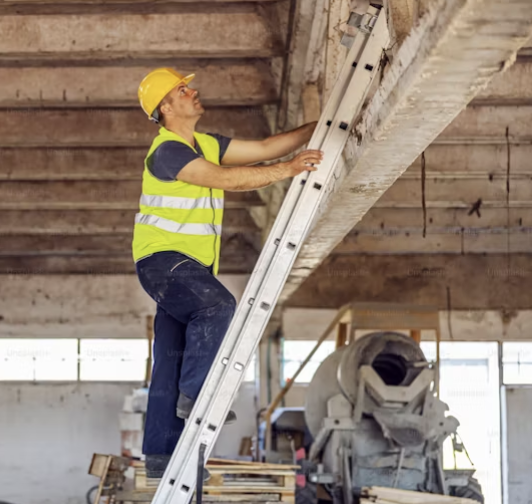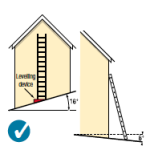A six step guide to using an extension ladder on a slope
16/10/2013

Ladders can be used for many different applications. People use ladders to get on top of roofs, decorate, cleaning out gutters and many other commercial and domestic tasks.
Working with a ladder on a slope can be a very dangerous task. We’ll talk you through how to use a ladder on a slope in six steps to avoid any unnecessary accidents.
Here are six steps to help you use ladders on a slope safely.
Before you get started you will need an extension ladder suitable for the height you require, a ladder leveller such as a Big Grip Ladder Stabiliser, x2 lashing straps and a rope.
- Inspect the ladder to establish that it’s in good condition such as no loose rungs, no movement in the stiles & the feet are in good condition.
- Examine the area where the ladder will be positioned – the area must be a clean, solid surface.
 Ladders should not be used on a suitable surface where the side slope is greater than 16° or the back slope is greater than 6°, unless the manufacturer states otherwise (see image below).
Ladders should not be used on a suitable surface where the side slope is greater than 16° or the back slope is greater than 6°, unless the manufacturer states otherwise (see image below).- Extend the ladder and lean it up against the building/wall. Set up the ladder at the correct angle which should be 1 metre out for every 4 metres up or 75°. The rungs should always look horizontal and an appropriate levelling device should be used such as a Big Grip Ladder Stabiliser or the LSD Ladder Leveller.
- Climb up the ladder until you reach the top and tie both stiles to a suitable point using a rope.
- Where possible, secure the middle of the ladder by tying a lashing kit around the stiles and fixing with an eyebolt.
We recommend that a thorough risk assessment is carried out prior to working at height.
Where this is not practical, use a safe, unsecured ladder or a ladder supplemented with an effective ladder stability device recommended by suppliers/manufacturers that is stable enough to be used unsecured in a worst-case scenario.
By considering these six steps before using your ladders on a slope, you will be much safer and less likely to be the victim of a work at height accident.